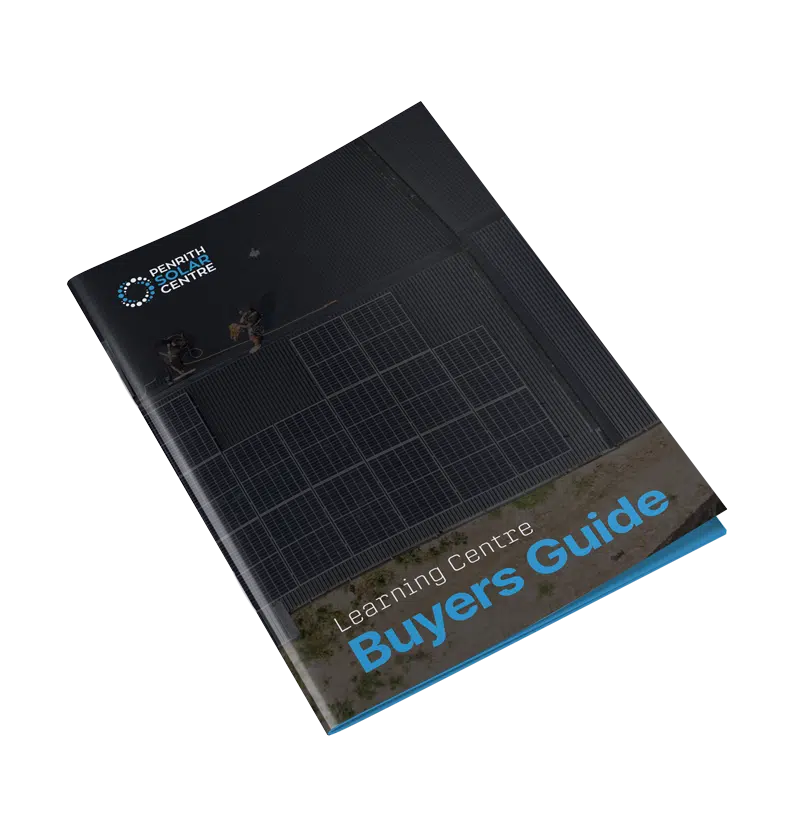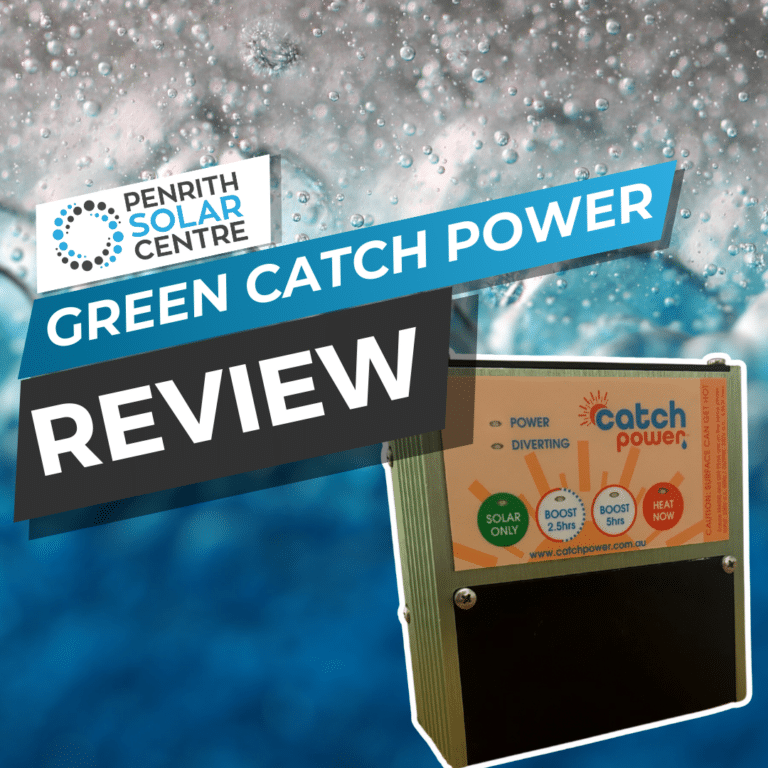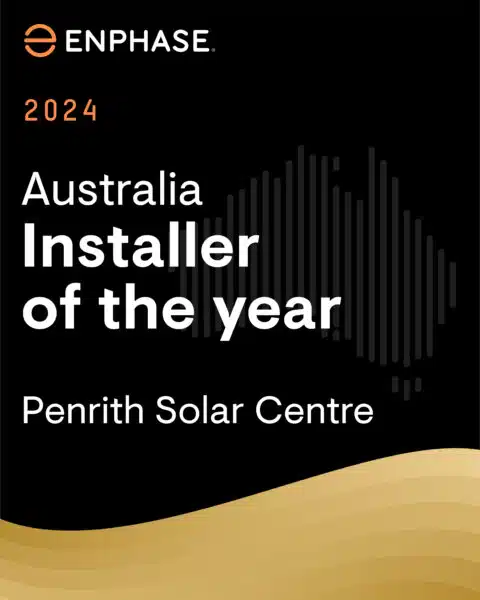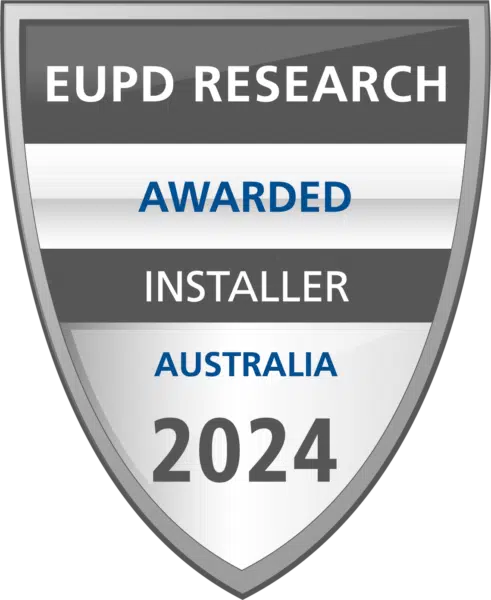
With all the attention electric vehicles get these days, you might be left wondering if one is a practical investment for you. If you’re left scratching your head at whether or not the infrastructure of charging stations exists to make it worthwhile and not a hassle, you’re not alone.
At Penrith Solar Centre, we pride ourselves on keeping our finger on the pulse of everything to do with renewable energy. EV chargers are the next step towards an electric lifestyle. Climate change and the increasing cost of electricity from the grid are pushing many customers to consider an electric vehicle (or two).
In this article, you will learn:
- Electric Vehicle Charging Stats
- Types of EV Charging Plugs in Australia
- Public EV Charging Stations in the Penrith Area
- Charging Your Electric Vehicle at Home
- Costs of Installing an EV Charger
- Where Can You Install an EV Charger?
- Tesla Wall Connector – Key Features
- myenergi zappi – Key Features
By the end of this article, you’ll understand public charging, installing a charger in your home, and what type of chargers we recommend. Onwards!

Electric Vehicle Charging Stats
One in four new cars sold in Australia in May 2024 was an EV or hybrid. Considering that last year, only 7% of all new vehicle sales were EVs or hybrids, you can see the market is growing.
Here are some stats about this rapidly evolving industry.
New Charging Sites and Points:
- 397 new car-charging sites and 755 new charging points were built in Australia during 2023. A charging site is where charging points are located. A charging point is how many plugs are available at a charging site.
- This growth represents a 90% increase in charging sites from 2023 to 2024.
Future Projections:
- A total of 870 new charging sites are expected, bringing the national total to over 1,600 by the end of 2024.
Market Leaders:
- Chargefox has the most installed electric chargers, operating over one-third of charging sites in Australia.
- Evie Networks follows with 23% market share.
- Tesla holds 10%.
- Jolt and NRMA are in fourth and fifth positions, respectively.
- Traditional petrol retailers BP and Ampol are also expanding their EV charging stations, ranking sixth and seventh.
EV Sales Growth:
- Australians purchased over 87,000 electric cars in 2023, more than double the sales in 2022.
If you’re interested in learning a bit more about shopping for a solar system, you might want to check out the following article titled, 6 Mistakes to Avoid When Buying Solar.
Types of EV Charging Plugs in Australia
CHAdeMO

- Charging Speed: CHAdeMO chargers typically provide DC fast charging with power outputs ranging from 50kW to 100kW. Some newer versions can go up to 400kW.
- Connector: This type uses a unique connector with a large, round plug.
- Compatibility: Commonly used by Japanese electric vehicle (EV) manufacturers like Nissan and Mitsubishi. It is compatible with vehicles such as the Nissan Leaf and Mitsubishi Outlander PHEV.
- Availability: While less common than CCS2 in Australia, CHAdeMO stations are still widely available, particularly at older fast-charging locations.
- Use Case: Ideal for quick top-ups during long trips or when time is a constraint, as it can charge a typical EV battery from 20% to 80% in about 30 minutes.
CCS2 (Combined Charging System Type 2)

- Charging Speed: CCS2 supports both AC and DC charging. DC fast charging can range from 50kW to 350kW (if your EV is allowed to charge that fast), with many public chargers offering 150kW or 350kW for rapid charging.
- Connector: Uses a combined connector that supports both AC and DC charging with a Type 2 AC plug and two additional DC pins.
- Compatibility: Widely adopted by European and American car manufacturers including BMW, Volkswagen, Hyundai, and Tesla (with an adapter). This makes it the most versatile and future-proof option.
- Availability: CCS2 is the most common fast-charging standard in Australia, with a growing number of stations across urban and regional areas.
- Use Case: Preferred for its versatility and compatibility with a wide range of EVs. It allows drivers to use the same port for both slow home charging and fast public charging.
Type 2

- Charging Speed: Type 2 chargers are typically used for AC charging with power outputs up to 22kW for three-phase charging, though most home chargers provide around 7.4kW.
- Connector: Features a circular connector with seven pins, supporting both single-phase and three-phase AC charging.
- Compatibility: Standard for most European EVs and widely used in Australia for home and public AC charging. It is also the standard for the charging port on the Tesla Model S, Model X, and Model 3 in Australia.
- Availability: Type 2 AC chargers are prevalent at public charging stations, workplaces, and homes. They are more common for slower, overnight charging rather than rapid charging.
- Use Case: Ideal for overnight charging at home or during long stays at workplaces and public charging spots. It provides a reliable way to fully charge an EV over several hours.
Wall Outlet (AU/NZ)
- Charging Speed: Typically, 1.5kW or 2kW if you have a 15-amp outlet. This is just a household GPO (general purpose outlet or power point). *NOTE* you will need to bring your own portable wall connector with you for this set up to work. This could take up to 50 hours to charge and is not recommended for daily charging.
- Connector: This is a standard AUD power point and will require you to bring your own portable ‘emergency’ style charger and plug it in. This is the only style of charger that you can ‘plug in.’ All other chargers are hard wired and are not portable.
- Compatibility: Each EV brand usually has their own portable charger available that’s compatible with a wall outlet.
- Availability: Everywhere that there is a power point!
- Use Case: Emergencies or VERY SLOW charging.
If you’re interested in learning a bit more about the upcoming solar battery rebate, you might want to check out the following article titled, Everything You Need to Know About the Home Battery Rebate for NSW.

Different Types of Charging Stations
Charging an EV is often as simple as plugging in anything else, like a vacuum cleaner. Charging stations are categorised as one of three levels:
Level 1
- The same as plugging into a regular power point at home.
- Alternating current (AC) power that charges slow (1.4kW – 2kW). Charging is usually done overnight because it’s so slow.
- For every hour of charging, you’ll generally get 10 to 20 kilometres of range.
Level 2
- Level 2 requires a dedicated charger with its own plug or socket, either in the home or at a station.
- AC charge range from 7kW to 22kW. Much faster than Level 1.
- Usually adds 30 to 130 kilometres of range per hour depending on the car and battery.
Level 3
- This is the level of the Tesla Supercharger network. You’ll need a dedicated, freestanding charger, much like the ones you see at the grocery store parking lot.
- Direct current (DC) power fast charging. This is the fastest charging option.
- This one is between 25kW – 350kW.
- Typically, this charger level can add 150 to 300 kilometres of range per hour. Some vehicles will be fully charged within 10 to 15 minutes.

If you’re interested in learning about the rebate for solar, you might want to check out the following article titled, How Does the Solar Rebate Work?
Public EV Charging Stations in the Penrith Area
The best way to find a public EV charging station near you is to just Google it. We found heaps of them.
An incredibly helpful website/app that we quite like is plugshare.com. PlugShare offers an interactive map that marks all public EV chargers in the Sydney metro area (and all over the world).

If you’d like to top off your EV free of charge, you might want to consider stopping by Penrith Solar Centre. You can plug your EV into one of our four dedicated Tesla chargers in front of our showroom.
And speaking of that showroom, it would be lovely if you came in for a visit and talked to one of our solar consultants about how to future-proof your energy.
After all, why would you charge your EV from the grid when you could do it from solar?
As for the rest of the Penrith area, here are some sites gathered from PlugShare you might want to check out if you have an EV:
Wagon Wheel Hotel, St Marys
2 Plugs – Type 2 – $0.66/kWh
Caddens Corner, Kingswood
4 Plugs – CHAdeMO, CCS2, Type 2 – Evie Networks 22 – 50kW
Ampol Foodary, Werrington
2 Plugs – CHAdeMO, CCS2 – AmpCharge 150kW – $0.69/kWh
Shell Station, Jamisontown
4 Plugs – CHAdeMO, CCS2 – Evie Networks 184 – 350kW
Penrith Homemaker Centre, Jamisontown
4 Plugs – Type 2; Exploren 22kW
Western Sydney Conference Centre, Penrith
5 Plugs – Type 2, Wall (AU/NZ) – Exploren 22kW
Nepean Village Shopping Centre, Penrith
4 Plugs – Type 2, CCS2 – Chargefox 7 – 120kW
Penrith Station Kiss and Ride, Penrith
2 Plugs – CHAdeMO, CCS2 – JOLT 25kW
Ampol Foodary, Penrith
2 Plugs – CHAdeMO, CCS2 – AmpCharge 100 – 180kW — $0.69/kWh
BP Penrith, Penrith
2 Plugs – CCS2 – BP Pulse Australia 75.25kW
Ampol Foodary, Genbrook
2 Plugs – CHAdeMO, CCS2 – AmpCharge 100 – 150kW — $0.69
Hope St Parking Lot, Blaxland
6 Plugs – CCS2 – Supercharger 250kW
Springwood Sports Club, Springwood
2 Plugs – Type 2 – Exploren 22kW — $0.51 (with App)
Springwood Car Park, Springwood
2 Plugs – Wall (AU/NZ)
Vineyard Hotel, Vineyard
1 Plug – Wall (AU/NZ)
Skyline Solar, Vineyard
2 Plugs – Type 2
GT Tooling, Mulgrave
4 Plugs – Three phase, J-1772, Caravan Mains Socket, Wall (AU/NZ)
Crowne Plaza Hawkesbury Valley, Windsor
2 Plugs – Type 2 – Tesla Destination 7kW
Spicers Sangoma Retreat, Bowen Mountain
1 Plug – Type 2 – Non networked 11kW
If you’re interested in learning a bit more about the process of choosing components for your solar system, you might want to check out the following article titled, How to Shop for a Solar System.

Charging Your Electric Vehicle at Home
Charging your EV at home is awfully convenient. It reduces reliance on public stations and is usually less expensive than charging elsewhere.
You just need an EV charger.
In the first quarter of 2025, the Enphase EV bidirectional charger is due to come to Australia. It’s already out in the US, and it features microinverters built into the charger, which is what gives it the bidirectional capability. So, will it be allowed to operate as a bidirectional charger in Australia? What cars will it work with? We’re not sure yet, but we’re really excited for this charger to come to Australia.
Home EV Charger Installation Process:
- Assessment: Penrith Solar Centre evaluates your home’s electrical system for the best charger setup.
- Installation: We install the charger and make sure it’s operational.
- Support: Penrith Solar Centre has you covered here too. We offer ongoing support and maintenance. Your charger will need to perform for years to come, and installing through us sets you up for optimal charger performance.
Benefits: You can charge overnight, start each day with a full battery, and eliminate frequent trips to public stations.
If you have solar or are considering solar, this is a no-brainer. It’s exponentially less expensive to charge your car from solar rather than paying for electricity from the grid.
If you’re interested in learning a bit more about solar batteries, you might want to start with the following article titled, Adding a Battery to a Solar System.
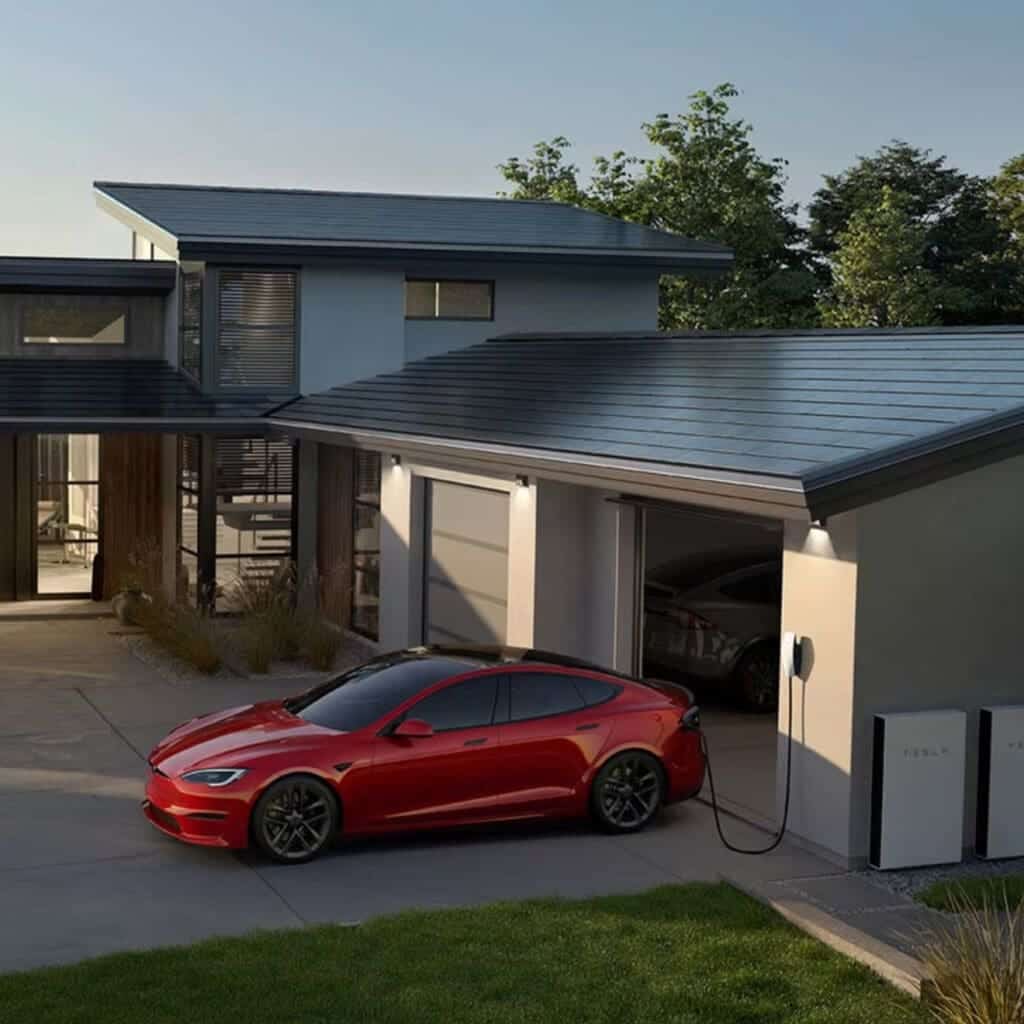
Costs of Installing an EV Charger
Factors Influencing Costs: Type of charger, installation complexity, and necessary electrical upgrades.
Cost Breakdown:
Type of Power:
- Single-phase: Sufficient for basic chargers.
- Three-phase: Required for faster chargers.
EV Charger Cost:
- Range: $1,550 to $2,500, at Penrith Solar Centre depending on brand and features. This includes installation and servicing warranties.
Electrical Upgrades:
- Costs: A few hundred to several thousand dollars, depending on home system requirements. Is your home single-phase or three-phase? Are you considering upgrading to three-phase? While it’s a good idea to do this to future-proof your energy needs, it can be expensive and sometimes necessary.
Home Requirements:
- It’s similar to the load for large appliances (refrigerators, dryers, ovens, etc.).
If you’re interested in learning about the rebate for solar, you might want to check out the following article titled, Understanding the Federal Government Solar Rebate in Australia: The STC Scheme in 2024
Where Can You Install an EV Charger?
Well, where do you park your car?
An EV charger can be installed indoors or outdoors, depending on the type of charger.
Outdoor-rated EV chargers can withstand weather conditions. They’re suitable for driveways, carports, and outdoor areas.
Indoor chargers often get installed in the garage. That’s where most folks park their car.
Pro Tip: When installing an EV charger in a garage, we recommend installing it close to the big garage door and not close to the inner door. Many customers like to back into their garage and feel that the internal wall is the best place to install it. It isn’t.
If you have a table that needs varnishing, for example, that project might take a couple days. You won’t be able to park in your garage and it might be a stretch for the cable to reach your car from the rear of the garage.
If you’re interested in learning a bit more about the importance of a good installer for your solar (the most important component of any system, seriously), you might want to check out the following article titled, In-house Installers vs. Subcontractors: Which is Better?
Tesla Wall Connector – Key Features
We sell two types of chargers, so we’re going to take a second and…plug them.
The first is the Tesla Wall Connector.
High Charging Speed:
- Adds up to 71 kilometres of range per hour of charging.
- Equipped with a 7.3 metre cable.
Versatile Installation:
Can be installed indoors or outdoors:
- Homes
- Apartments
- Hospitality buildings
- Workplaces
Power and Compatibility:
- Type 2 Plug
- Designed to charge EVs with up to 22kW of power.
- Compatible with both single-phase and three-phase homes.
Charging Modes:
Offers two charging modes:
- Fast charging – for immediate results.
- Scheduled charging – if you’re importing your energy from the grid, you’ll find this feature helpful. Just program it to charge overnight when energy may be less expensive.
- Charge from Solar – This is only available if you have installed other Tesla products like a Powerwall.
Design and Warranty:
- Does not include a display, but the Tesla Energy App is comprehensive and easy to navigate. You can set it there.
- Comes with a four-year warranty.
If you’re interested in learning a bit more about the Tesla Wall Connector, you might want to check out the following article titled, Tesla Car Charger Review: Is It Right for You?
myenergi zappi – Key Features
We like the zappi charger because it’s so compatible. Here are the specs.
Available for:
- 7kW single-phase
- 22kW three-phase
Cable
- The Zappi comes either tethered or untethered, which means you can order it with a cable or not. The cable is 6.5 metres long.
Charging Modes:
Three charging modes:
- Eco: a mixture of energy imported from solar and the grid.
- Eco+: charging is continuously adjusted in response to how power is used in the home. Charing will pause if too much power is imported from the grid and continue once energy from your solar and battery is available.
- Fast: vehicle is charged at max power (from either solar or the grid).
Charging Range:
- Provides between 40 to 100 km of range per hour of charge depending on charging mode.
Compatibility:
- Type 2 Plug
- Compatible with all EVs, PHEVs (plug-in hybrid electric cars), and e-bikes available in the Australian and New Zealand markets.
Connectivity and Management:
- Supports OCPP (Open Charge Point Protocol). This is a standardised communication between EV charging devices, regardless of the manufacturer. It was created to allow compatibility between EV chargers and software.
Warranty:
- Comes with a three-year warranty.
If you’re interested in learning about other EV charger options, you might want to check out the following article titled, Zappi Charger Review: Is It the Right Choice for You?

Electric Vehicle Charging Surges in Australia
- Increased Market: Smart charging solutions are taking Australia by storm. While it’s still very much the “deep breath before the plunge,” they’ll soon become as common as petrol stations.
- Accessibility: Public chargers in Penrith, plus home installation options, make EV charging easy.
- Simplicity and Convenience: Charging an EV is simple, whether using public stations or a home charger.
- Solar Power: Using solar power for charging increases efficiency and reduces grid reliance. It saves the planet and saves you money.
At Penrith Solar Centre, we understand that it can be overwhelming to hear a lot of information very quickly about products you’ll need in the future. We’re just trying to best prepare you for your growing energy needs. EV chargers will be a part of that. Whether it’s time for you to install one, is entirely up to you.
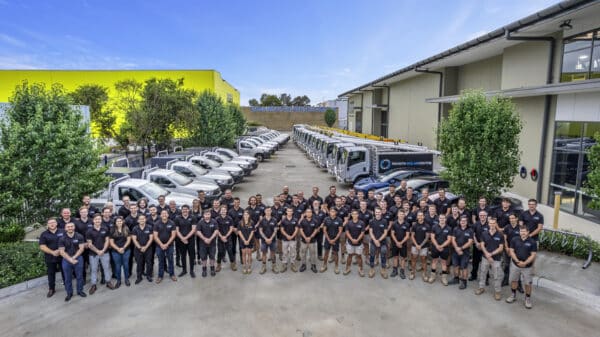
If you’re interested in hearing what our customers are saying about our apprentices and installers, you might want to check out the following article titled, “I’ve never had a more positive experience with tradespeople.” – How Tabitha Saved with Penrith Solar Centre.
References
The Guardian. (2024, January 16). Electric vehicles: Number of charging sites in Australia projected to double by end of 2024. The Guardian.
Transport for NSW. (2024). Charging an electric vehicle. NSW Government website.
